Melek Önen
Node Injection Link Stealing Attack
Jul 25, 2023Abstract:In this paper, we present a stealthy and effective attack that exposes privacy vulnerabilities in Graph Neural Networks (GNNs) by inferring private links within graph-structured data. Focusing on the inductive setting where new nodes join the graph and an API is used to query predictions, we investigate the potential leakage of private edge information. We also propose methods to preserve privacy while maintaining model utility. Our attack demonstrates superior performance in inferring the links compared to the state of the art. Furthermore, we examine the application of differential privacy (DP) mechanisms to mitigate the impact of our proposed attack, we analyze the trade-off between privacy preservation and model utility. Our work highlights the privacy vulnerabilities inherent in GNNs, underscoring the importance of developing robust privacy-preserving mechanisms for their application.
Differentially Private Adversarial Auto-Encoder to Protect Gender in Voice Biometrics
Jul 05, 2023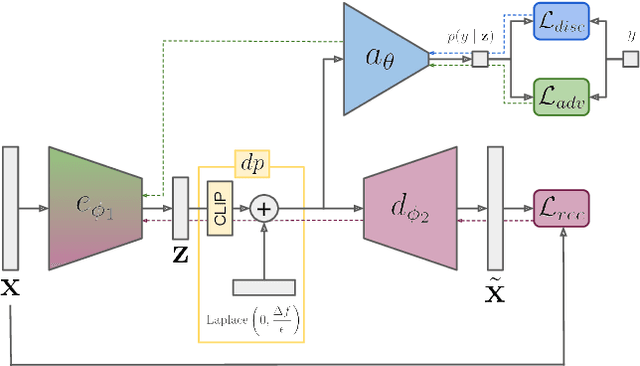
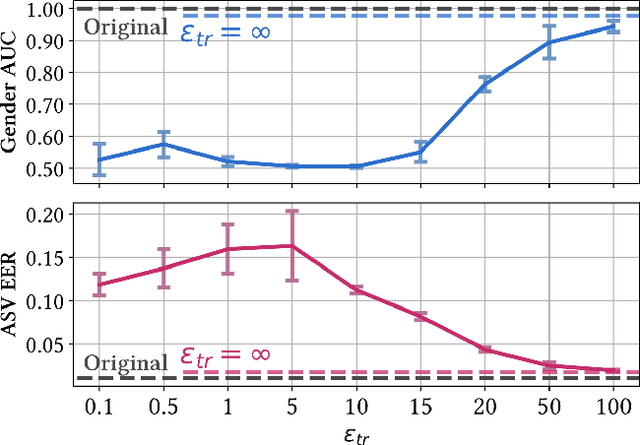
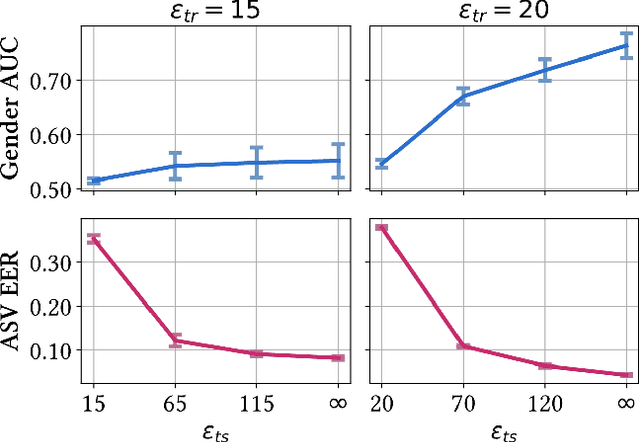
Abstract:Over the last decade, the use of Automatic Speaker Verification (ASV) systems has become increasingly widespread in response to the growing need for secure and efficient identity verification methods. The voice data encompasses a wealth of personal information, which includes but is not limited to gender, age, health condition, stress levels, and geographical and socio-cultural origins. These attributes, known as soft biometrics, are private and the user may wish to keep them confidential. However, with the advancement of machine learning algorithms, soft biometrics can be inferred automatically, creating the potential for unauthorized use. As such, it is crucial to ensure the protection of these personal data that are inherent within the voice while retaining the utility of identity recognition. In this paper, we present an adversarial Auto-Encoder--based approach to hide gender-related information in speaker embeddings, while preserving their effectiveness for speaker verification. We use an adversarial procedure against a gender classifier and incorporate a layer based on the Laplace mechanism into the Auto-Encoder architecture. This layer adds Laplace noise for more robust gender concealment and ensures differential privacy guarantees during inference for the output speaker embeddings. Experiments conducted on the VoxCeleb dataset demonstrate that speaker verification tasks can be effectively carried out while concealing speaker gender and ensuring differential privacy guarantees; moreover, the intensity of the Laplace noise can be tuned to select the desired trade-off between privacy and utility.
Fed-BioMed: Open, Transparent and Trusted Federated Learning for Real-world Healthcare Applications
Apr 24, 2023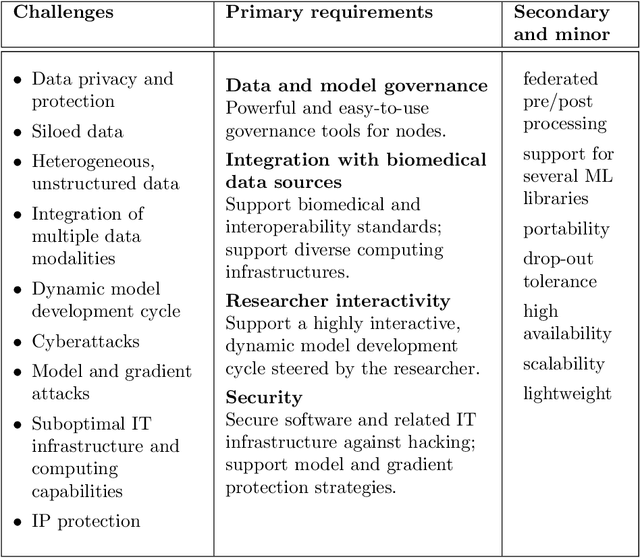
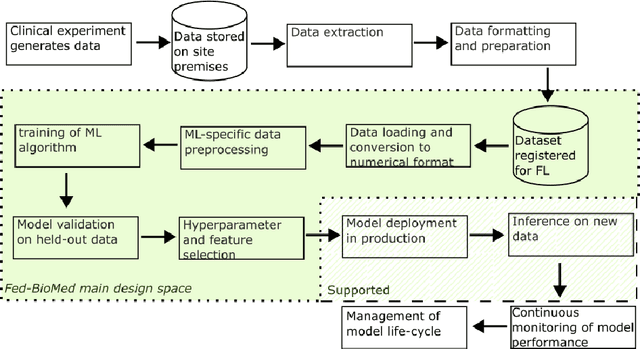
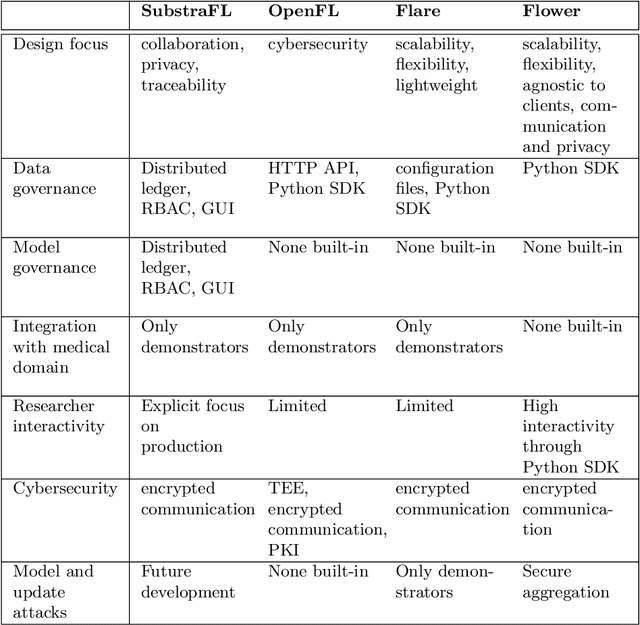
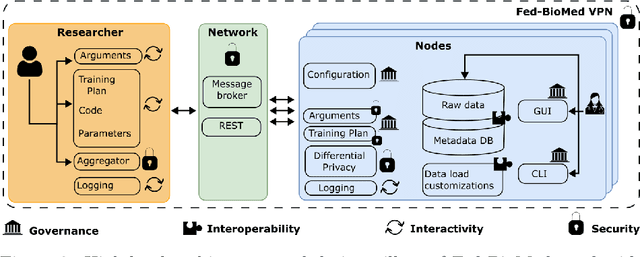
Abstract:The real-world implementation of federated learning is complex and requires research and development actions at the crossroad between different domains ranging from data science, to software programming, networking, and security. While today several FL libraries are proposed to data scientists and users, most of these frameworks are not designed to find seamless application in medical use-cases, due to the specific challenges and requirements of working with medical data and hospital infrastructures. Moreover, governance, design principles, and security assumptions of these frameworks are generally not clearly illustrated, thus preventing the adoption in sensitive applications. Motivated by the current technological landscape of FL in healthcare, in this document we present Fed-BioMed: a research and development initiative aiming at translating federated learning (FL) into real-world medical research applications. We describe our design space, targeted users, domain constraints, and how these factors affect our current and future software architecture.
Privacy Preserving Image Registration
May 17, 2022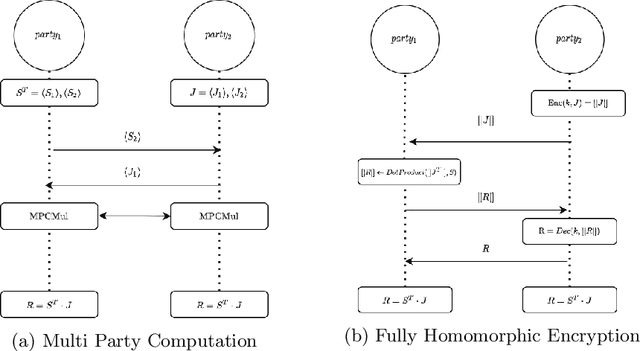
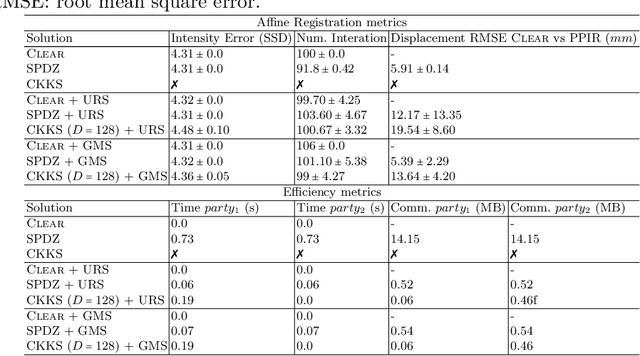
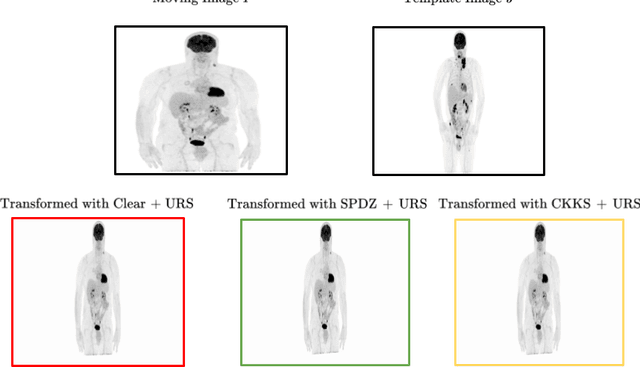

Abstract:Image registration is a key task in medical imaging applications, allowing to represent medical images in a common spatial reference frame. Current literature on image registration is generally based on the assumption that images are usually accessible to the researcher, from which the spatial transformation is subsequently estimated. This common assumption may not be met in current practical applications, since the sensitive nature of medical images may ultimately require their analysis under privacy constraints, preventing to share the image content in clear form. In this work, we formulate the problem of image registration under a privacy preserving regime, where images are assumed to be confidential and cannot be disclosed in clear. We derive our privacy preserving image registration framework by extending classical registration paradigms to account for advanced cryptographic tools, such as secure multi-party computation and homomorphic encryption, that enable the execution of operations without leaking the underlying data. To overcome the problem of performance and scalability of cryptographic tools in high dimensions, we first propose to optimize the underlying image registration operations using gradient approximations. We further revisit the use of homomorphic encryption and use a packing method to allow the encryption and multiplication of large matrices more efficiently. We demonstrate our privacy preserving framework in linear and non-linear registration problems, evaluating its accuracy and scalability with respect to standard image registration. Our results show that privacy preserving image registration is feasible and can be adopted in sensitive medical imaging applications.
 Add to Chrome
Add to Chrome Add to Firefox
Add to Firefox Add to Edge
Add to Edge